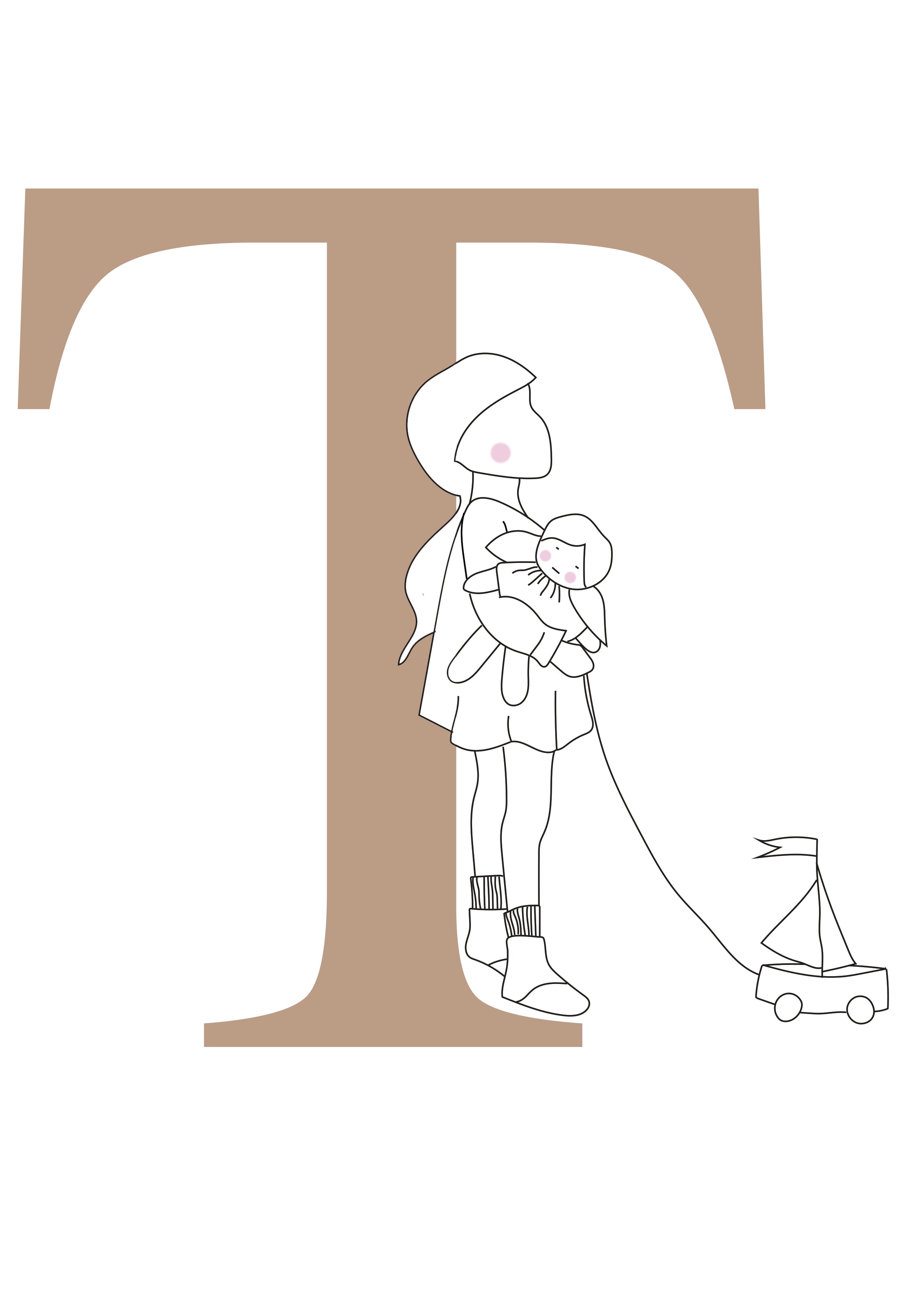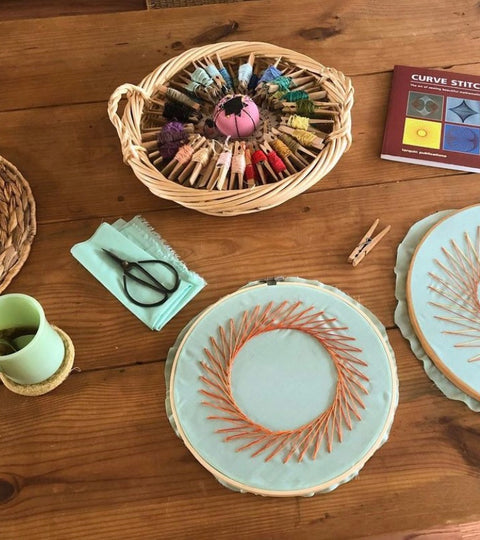By Amanda Bradley
“From Play, through Beauty, to Work. This is the golden path for education.”
~ Rudolf Steiner.
In this forth industrial age many people will probably question the relevance of craftwork within a child’s education and/or home life. We live in an age where a consumer cornucopia of objects are available at the click of a button - or a request to Alexa. We are used to fast, convenient, on trend items filling our homes. Why would we take the time, and spend the money on materials to make all these things ourselves? I saw a tik tok video recently where a man jokingly said “why buy it (a crochet blanket) yourself for $7 when you can make it yourself and spend $98 on craft supplies?” Indeed guy, why bother with craft lessons when children don’t NEED to know how to make anything?
Well, I’m gonna tell ya!
The Threefold Human Being
Steiner talked about how the feeling and will life are largely ignored in an education context because educators and policy makers don’t understand them. This lack of understanding has led to an over intellectualization of the western education system. We know there is so much more to the human being than cognitive thinking. There are many parts of our human-ness that require guidance and scaffolded experience to unfold as well as possible. In a Steiner/Waldorf education context, teachers acknowledge the soul and spirit, and endevour to nurture the three forces of thinking, feeling and willing throughout the child’s education. Ideally, when crafting an item from scratch, we engage these three soul forces. Let’s unpack this threefold nature in reference to the craft process.
• Thinking:
This comes through the intuition and imagination of our design and we use this to follow patterns or instructions. It also is where the development of intellectual judgment takes place.
• Feeling:
If you have ever made anything you will know that feeling comes into it in all sorts of ways, for example - the way we feel about the color or textures being used. To put it very simply, do we like or dislike what is being formed? This is where the faculty of aesthetic judgment occurs.

• Willing:
The activity of the will can be hard to put into words, because it is all about the ‘doing’. We are describing the impulse that drives our hands to create, and our bodies to move. It shapes and propels us into the future. Steiner describes the connection will has to feeling – in that feelings are undeveloped will, and the outcome of our will/actions our feelings made manifest.
The will impulse is evident in our work, and in our actions. Do we stick with a monotonous task and see it through to completion? The challenge of ‘sticking with it’ is very evident when knitting socks with class five children. One in three children will always jokingly ask, ‘do I really need to make the other sock, I am happy with just one.’ All handwork projects train that will. The development of the will is important not only for seeing handwork projects through to completion, but according to Steiner, we live in our will, meaning our will capacities has baring on all facets of our being. So, its best we help our children develop it as best they can!
Developing judgement
The judgment I am talking about here, is a holistic judgment that occurs through the use of thinking, the feeling or aesthetic sense, and the faculty of the physical senses. When carving an object from wood, such as a spoon, the whole human being is involved. Slowly wood is chiseled away and the child is encouraged to literally feel it, to hold it and to judge whether it is comfortable to hold, and is it able to achieve its task. Is the bowl of the spoon deep enough to contain enough soup? Is the handle the right length and width to be held comfortably and in a state of balance? What would need to be done differently if one was to create a tea spoon, or a serving spoon?
All of these questions arise as a conversation between the maker and the material. It is the epitome of a truthful experience. The material will either serve its purpose and be comfortable to hold, or it won’t. If it is not at the ‘end’ point, the teacher will advise the child to do certain things to get it feeling right. In this way the child learns to respect what goes into a well-designed product, how to work with various materials, and they participate within a truthful, real life experience. They also come to realize that every action they make has a consequence and that they are indeed, a creator of their world. Or perhaps a better term is a transformer of their world.
There is empirical evidence to support the Steiner education philosophy that it is important children work with their hands as much as possible. “Many forms of thinking (analytical, synthetic, teleological, casual, and so forth) need to be learned in today’s complex society. It is our task as teachers to apply various ways of thinking to the subject matter we are teaching. In nurturing the cognitive development of their students, Waldorf schools aim to include training in judgment, in the sense of discretion – through handwork and practical arts.” (Livingston and Mitchell). Through self analysis of students own work, they are able to evaluate their own craft making, and apply general analytical thinking to a particular problem, while relying on their physical senses, including one that has particular baring on cognitive development – touch.
According to Frank Wilson, the brain learns new cognitive skills from the hand. In a study conducted by van der Fels et al (2015) a significant relationship was found between cognitive skills and some fine motor skills. They found this to be the case in pre-pubescent children and suggest more research be undertaken to further explore the potential links in depth. In a study undertaken by Winter et al (2016), the authors found a significant relationship between the fine motor skill capacities of a child and the child’s lexical development. These recent studies indicate that there is evidence to support Steiner school educators hypothesis that the fine motor skill activity of handwork contributes to the development of cognitive capacities.

An understanding of the world around them
One can begin to ponder the relationship we have to the spaces we live in and objects we fill our home with arises when assessing the value of handcrafted objects. Gosh, we have so much stuff! Did you know that the business of household storage in the United States was one of the fastest growing forms of business these past 20 years? We have so much stuff, we can’t even fit it all into our houses. I would argue that one of the antidotes for consumer culture, is the cultivation of craft skills.
Rudolf Steiner strongly reccomended that students leave school with at least a basic understanding of how the natural, mechanical, and social world worked. The reason for this was not to educate an army or potters or engineers, but to give the students a grounding in reality. From experiencing the labor that goes into handknitting a pair of socks in primary school, to learning about mass textile production during the industrial revolution in high school - a holistic understanding of how the current global economy affects us on a social, political and environmental level, is formed.
Students develop an understanding of the value of natural resources in regards to the time and energy needed for a material to grow and be processed. They learn the value of human labor vs the efficiency of mechanized production, and as they get older this formed judgment can be used to assess the state of the labor market and environmental impact the items they consume have – they become informed citizens, free to make decisions as to how to live, how to spend their money and where to put their energy.
Handcraft in a child’s education is about so much more than the final object. It’s a holistic process that Stephen Knot describes as including “...work, productivity, aesthetics, play and labor [which] are continually negotiated in this spatial-temporal zone.” The opportunity to connect with culture and place are embedded within craft practices, the social and emotional lessons learned within a creative space are endless and organically arise.
Craft can be seen as a way for children to develop their judgment and understand the value of human made artifacts in their world. They learn that they are the creators of their spaces, and that have a responsibility to their environment, that resources need to be used mindfully and with respect. Making useful and beautiful artifacts is what we do, it is a way express and preserve culture. By providing children with craft experiences they are offered a pathway to connect with their culture, the cultural life of others and stand in their humanity. After all, to be human is to create.
~
Further Reading
“Educating the Will” by Michael Howard
“Modern Art of Education” by Rudolf Steiner
“The First Teachers Course” by Rudolf Steiner
“The Hand” by Frank Wilson
“Will-Developed Intelligence: Handwork and Practical Arts in the Waldorf School.” By P Livingston, and D Mitchell
“ The relationship between motor skills and cognitive skills in 4-16 year old typically developing children: A systematic review.” in Journal of Science and Medicine in Sport. 18(6) By Van der Fels, I.M.J., te Wierike, S.C.M., Hartman, E., Elferink-Gemser, M.T., Smith, J., & Visscher, C.
“Fine Motor Skills and Lexical Processing in Children and Adults.” In Frontiers in Psychology (2021). Vol 12. By Winter, R.E., Stoeger, H., & Suggate, S.P.
~
Images (1, 2, 4, 5, 7) shared with permission from Annie Haas:
Annie is a homeschooling mother and mentor to many other parents wanting to bring waldorf homeschooling to their children. You can join her online collective at www.thechildisthecurriculum.com or on Instagram @thechildisthecurriculum
About Amanda
Amanda Bradley (Ngāti Whakaue) is based on the Kāpiti Coast in Aotearoa, New Zealand and is working on her masters thesis about the value of crafts in primary education and how it situates the maker in place and culture. She is a Steiner handwork teacher, an artist, a mother and host of the Holistic Human Podcast. You can connect with her on Instagram @holistic_human_aotearoa










0 Comments
There are no comments yet. Be the first one to post one!